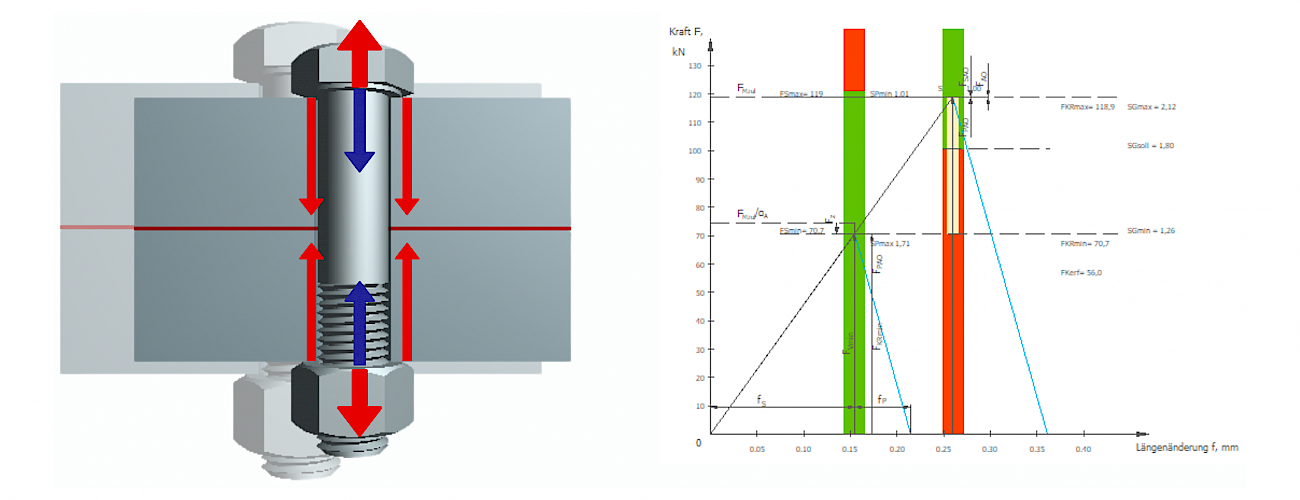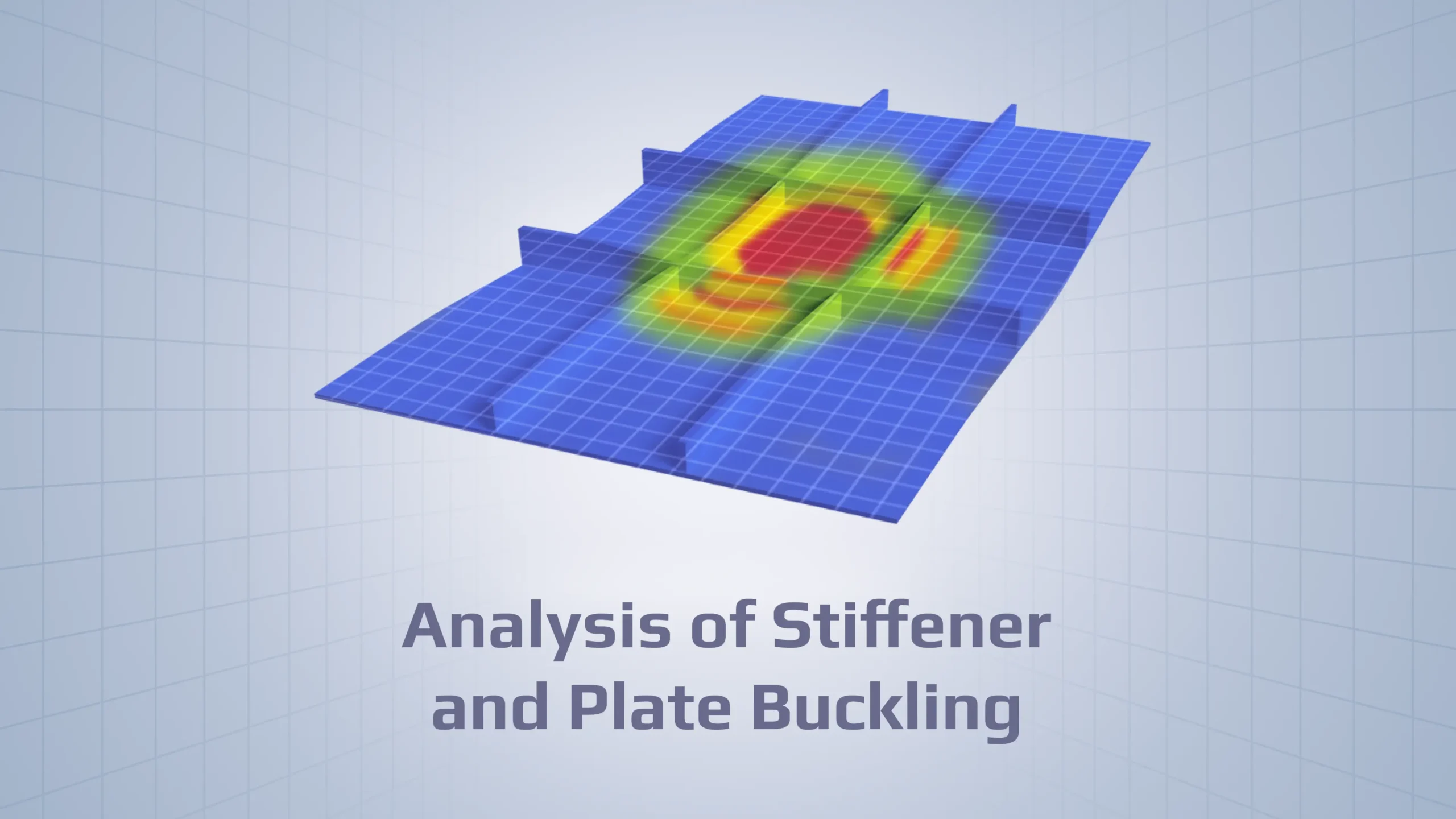Bolt Stress Calculations: A Step-by-Step Guide

Following the series of articles about bolts, we will now delve into one of the most critical aspects of structural connections: bolt stress calculations. Whether you are designing a bridge, a high-rise, or an industrial structure, the forces exerted on bolts need to be carefully understood and managed.
As part of the loading condition, Bolt stress is a critical factor in these calculations, but it’s just one aspect. To accurately determine bolt strength, you must also consider safety factors, material properties, and allowable stress to ensure the connection is designed to handle applied loads effectively.
This guide will explain how to calculate bolt stress step-by-step, focusing on practical applications for structural engineers. From understanding the tensile stress area to calculating bolt loads, we’ll cover everything you need to know to ensure your bolts perform reliably in real-world conditions.
Read previous articles about bolts:
- Standards for Bolts: A Comprehensive Guide
- Understanding Bolt Specifications: A Beginner’s Guide
- Bolt Strength Calculations: Understanding the Fundamentals
What Is Bolt Stress?
Bolt stress refers to the internal forces experienced by a bolt, including tension, shear, and bearing stresses, which are all relevant in most practical applications. When subjected to loads, the bolt stretches, creating a state of stress that must be accurately calculated to ensure the joint’s integrity. Proper calculations help avoid structural failures, ensuring the bolt can handle the applied forces without yielding or breaking.
Bolt stress is the internal force per unit area in response to applied loads. Properly evaluating this stress is critical, as exceeding the material’s design limits can result in deformation or failure of the structure.
(source)
Step 1: Define the Type of Bolt Stress
When it comes to bolt stress calculations, understanding the various stresses that bolts may encounter is crucial for structural engineers. Depending on the load and application, different forces act on bolts, and these stresses must be evaluated to ensure the bolt can withstand them without failure. Here are the four key types of bolt stresses:
1. Tensile and Preload Stress
Tensile stress is the most common type in bolted joints, particularly in structural applications. This stress occurs when a force pulls on the bolt along its length, attempting to stretch it. The tensile stress is calculated as the load applied to the bolt divided by the tensile stress area. Ensuring that tensile stress remains within allowable limits, typically 50-75% of the bolt material’s yield strength as defined by safety factors, is essential to prevent permanent deformation or bolt failure.
Moreover, bolt preload stress is caused by tension intentionally applied to a bolt during the tightening process to create a clamping force in the joint. Bolt preload is used to keep plates together, help resist shear force by using friction between clamped plates, or stop plate movement.
Preload stress is typically calculated based on the torque applied during tightening and must be carefully controlled to avoid overloading the bolt. If the preload is too low, the joint may loosen, but if it’s too high, the bolt could experience issues such as yielding, fatigue failure, or thread stripping, depending on the material and operating conditions. Preload stress is especially important in bolted joints designed for structural reliability, such as those in steel frames or bridge connections.
2. Shear Stress
Shear stress occurs when the load is applied perpendicular to the bolt axis, causing it to experience a sliding force. In structural connections, bolts are often subjected to shear stress, especially in lap joints or connections where members overlap. In structural connections, bolts in lap joints may experience double shear, doubling the cross-sectional area used in shear stress calculations.
Unlike tensile stress, which acts along the bolt’s length, shear stress acts across the cross-section of the bolt. Proper shear stress calculations help prevent bolt shear-off, which can lead to catastrophic joint failures.
3. Bearing Stress
Bearing stress arises when the surface of the bolt is in contact with the surface of the connected material (e.g., steel plates). Stress occurs at the interface between the bolt and the hole it passes through, distributing the load over a small area.
If not adequately accounted for, bearing stress can lead to deformation in the bolt or the hole. Deformation can occur in both the bolt and the connected material, leading to eventual loosening or failure. In structural engineering, it’s important to ensure that the bearing stress does not exceed the allowable limits for both the bolt and the connected materials.
Step 2: Use Proper Formulas for Bolt Stress Calculation
Each formula helps ensure that the bolt can withstand the loads applied in a specific context, whether resisting tension, shear, bearing forces, or holding a joint together under preload.
1. Tensile and Preload Stress Calculation
The formula for calculating tensile stress is:
Where:
- F = axial load (force applied along the bolt’s axis)
- At = tensile stress area of the bolt (depends on the bolt’s diameter and thread pitch)
The tensile stress area At can be found in standard tables based on bolt size and thread series, or it can be calculated using the following approximation for most bolts. Also, the tensile stress area At is smaller than the nominal cross-sectional area of the bolt, which is critical for new engineers to understand when assessing load capacity.
The preload stress can be calculated from the tightening torque using:
Where:
- T = applied torque
- K = torque coefficient (typically between 0.2 and 0.3, depending on lubrication and bolt material)
- dnom = nominal diameter of the bolt
Typically, bolt preload is about 70% of the bolt’s ultimate tensile strength the bolt. So, the preload stress ensures that the joint remains tightly clamped, preventing loosening under dynamic loads while keeping the tensile stress within allowable limits.
2. Shear Stress Calculation
The formula for shear stress is:
Where:
- V = shear force acting on the bolt
- As = cross-sectional area of the bolt
The cross-sectional area should be considered twice for bolts in double shear (common in structural connections).

3. Bearing Stress Calculation
The formula for bearing stress is:
Where:
- F = the force transferred through the contact surface of the bolt and connected material
- dnom = nominal diameter of the bolt
- t = thickness of the material being fastened
Bearing stress must be below the material’s bearing strength to avoid deformation or damage at the bolt hole.
These formulas help to calculate bolt stress areas properly; however, such services as SDC Verifier can help perform these calculations quicker.
Step 3. Practical Application
In real-world structural projects, it’s essential to account for all four types of stresses when selecting and designing bolted joints. Neglecting one of these forces can lead to insufficient performance or even catastrophic failure. Each type of stress has its own role in determining the safety and durability of a connection:
- Tensile stress ensures the bolt can carry axial loads without yielding.
- Shear stress checks the bolt’s capacity to resist lateral forces.
- Bearing stress prevents local damage to materials.
- Preload stress helps maintain the integrity of the joint by applying the correct clamping force.
By following these formulas and stress calculations, structural engineers can design bolted connections that meet safety and performance requirements, ensuring that structures remain secure under various loading conditions.
Accurate bolt stress calculations ensure that even the most demanding structural applications stay safe and reliable over time. Moreover, SDC Verifier’s library of standards, involving AISC 360-10, assists in checking bolt stress areas.
Conclusion
Bolt strength calculations form the backbone of structural connection design, ensuring the safety and longevity of any construction project. While bolt stress is an integral part of the equation, it’s crucial to consider safety factors, material properties, and allowable stress when designing connections. From bridges to industrial buildings, bolts must be evaluated for tensile, shear, bearing, and preload stresses and their overall strength to prevent failures.
By mastering these calculations and understanding how to compare stress values with allowable limits, structural engineers can design reliable connections that withstand the test of time. Accurate bolt strength analysis isn’t just about numbers; it’s about ensuring the structural integrity of your designs and safeguarding the future of the structures you create.












